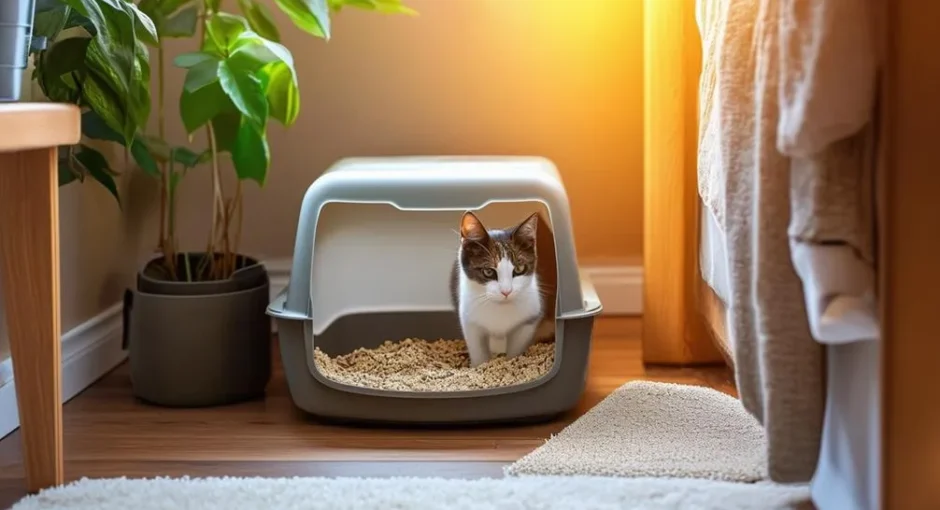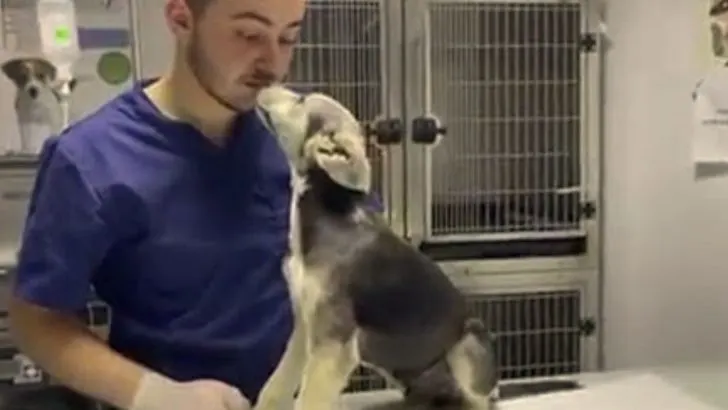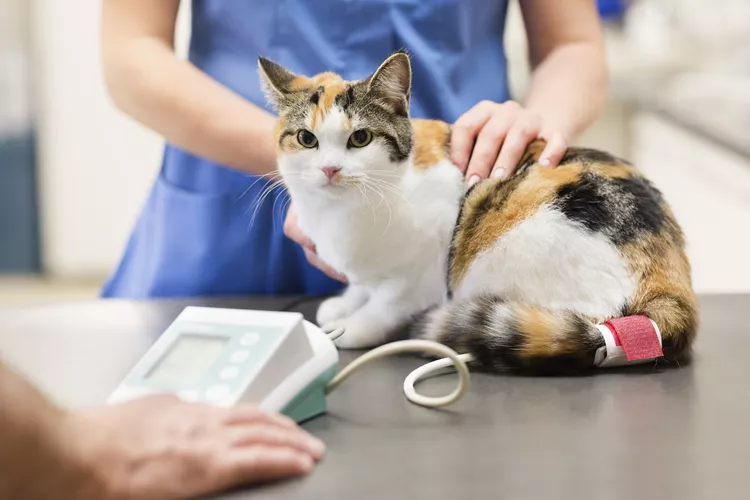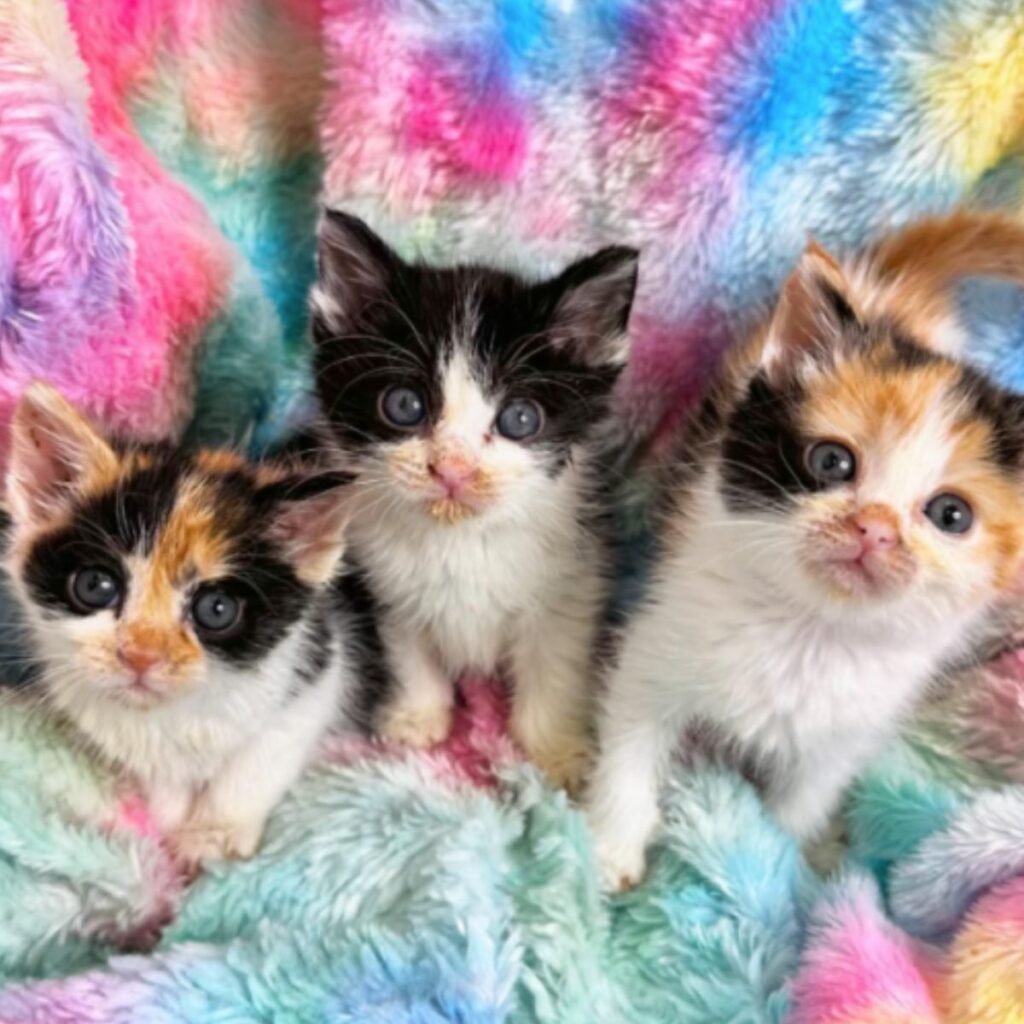Many cat owners underestimate the importance of proper litter box setup, inadvertently creating an environment that causes their pets undue stress and discomfort.
From the size and type of the box to the cleanliness and choice of litter, each factor plays a vital role in guaranteeing your cat‘s well-being.
A too-small box restricts movement, while a hooded one can trap odors, making the space uninviting.
Even the frequency of cleaning and the type of litter used can impact your cat‘s willingness to use the box.
So, what are the best practices to ensure a comfortable and hygienic litter box environment?
Litter Box Size Matters

When selecting a litter box, ensuring it is appropriately sized for your cat is paramount for their comfort and well-being.
Cats, by nature, need ample space to move, dig, and turn around without feeling constrained.
Larger breeds and overweight cats, in particular, benefit from more spacious litter boxes, reducing the risk of discomfort and stress.
An undersized litter box can lead to inappropriate elimination behaviors, as your cat may seek more accommodating alternatives.
As kittens grow, acclimating them to larger boxes is essential to maintain their comfort and hygiene.
Ensuring your litter box is suitably large not only promotes your cat‘s physical health but also supports their instinctual behaviors, fostering a harmonious living environment for both you and your pet.
Read more: 9 Things Your Cat Does For You Without You Knowing
Open Vs. Hooded Boxes
The choice between open and hooded litter boxes greatly impacts a cat‘s comfort and sense of security.
Open boxes provide a clear line of sight, making cats feel less vulnerable while they do their business.
This visibility can reduce anxiety, encouraging consistent use.
In contrast, hooded boxes might trap odors and create a confined space, which some kitties find distressing.
While hooded options can contain litter scatter, they can also deter usage if the kitty feels cornered.
Assess your cat‘s behavior and preferences to determine the best option.
Remember, ensuring your kitty feels secure and comfortable in their litter box setup promotes healthier habits and minimizes stress-related issues.
Read more: The Dark Side Of Meowing: How Cats Manipulate Their Owners
Daily And Deep Cleaning
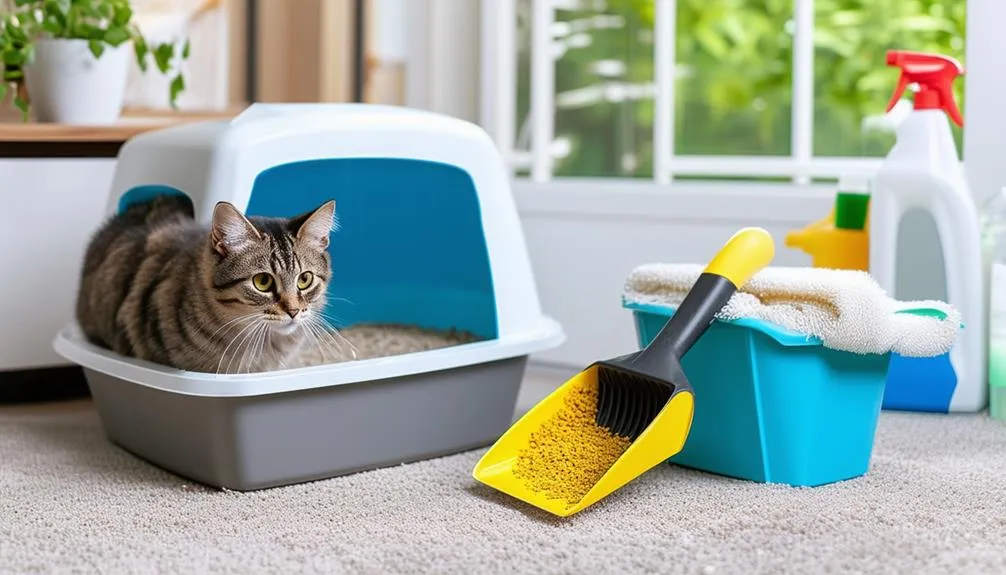
Maintaining a clean litter box involves both daily scooping and periodic deep cleaning to guarantee a hygienic environment for your cat.
Daily scooping is essential to remove waste promptly, preventing odor buildup and ensuring your cat has a clean place to do its business.
A quick daily check helps you stay on top of any messes, providing a fresh and inviting space for your cat companion.
Deep cleaning, performed weekly or bi-weekly, involves emptying the box entirely, scrubbing it with mild soap and water, and refilling it with fresh litter.
This routine eradicates lingering bacteria and odor, promoting a healthier home for both you and your cat companion.
Read more: The Dark Side Of Meowing: How Cats Manipulate Their Owners
Selecting The Right Litter
After establishing a regular cleaning routine, selecting the right litter becomes essential to guarantee your cat‘s comfort and the overall effectiveness of the litter box setup.
Cats generally prefer unscented litter, as their sensitive noses can be easily overwhelmed by artificial fragrances. While clay litter is popular, it produces silica dust that can be harmful to both cats and humans.
Crystal litter, though effective at odor control, can be harsh on a cat‘s paws. Alternatively, wood pellets offer a more eco-friendly option with minimal dust and a natural scent.
Ultimately, the ideal litter should cater to your cat‘s preferences, ensuring they use the litter box comfortably and consistently, thereby maintaining a clean and pleasant environment.
Read more: This “Strange Thing” Every Cat Has Under Its Belly Baffles Scientists
Ideal Litter Depth
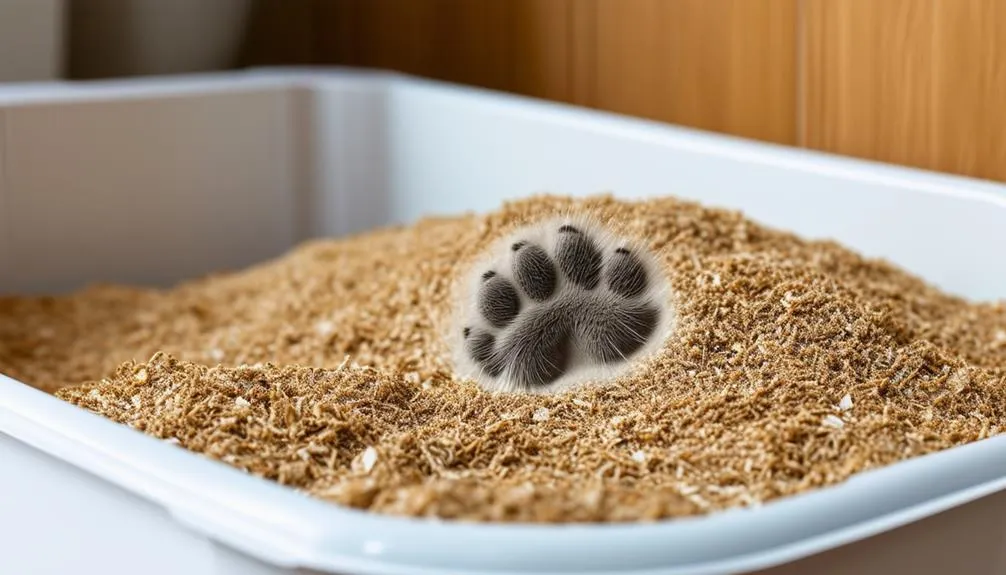
To ensure ideal comfort and hygiene for your cat, a minimum depth of 3 inches of litter should be maintained in the litter box.
This depth allows cats to dig and bury their waste, mimicking natural behaviors and ensuring their comfort.
A sufficient layer of litter also aids in effective odor and moisture absorption, maintaining cleanliness between scooping sessions. Regularly check the litter level and replenish as needed to maintain this depth.
A well-maintained litter depth not only keeps your cat happy and healthy but also minimizes the frequency of deep cleanings. By providing an excellent environment, you foster a harmonious relationship between your cat and their litter box.
Read more: 9 Things Your Cat Does For You Without You Knowing
Conclusion
Ironically, the simplest aspects of litter box setup often become the most overlooked, leading to a stressed and unhappy cat.
Ensuring the correct size, opting for open designs, adhering to a strict cleaning regimen, and selecting the appropriate litter are fundamental steps.
These considerations, while seemingly trivial, profoundly impact a cat‘s well-being. By meticulously addressing these details, a harmonious and comfortable environment is created, promoting healthier habits and a more contented pet.
